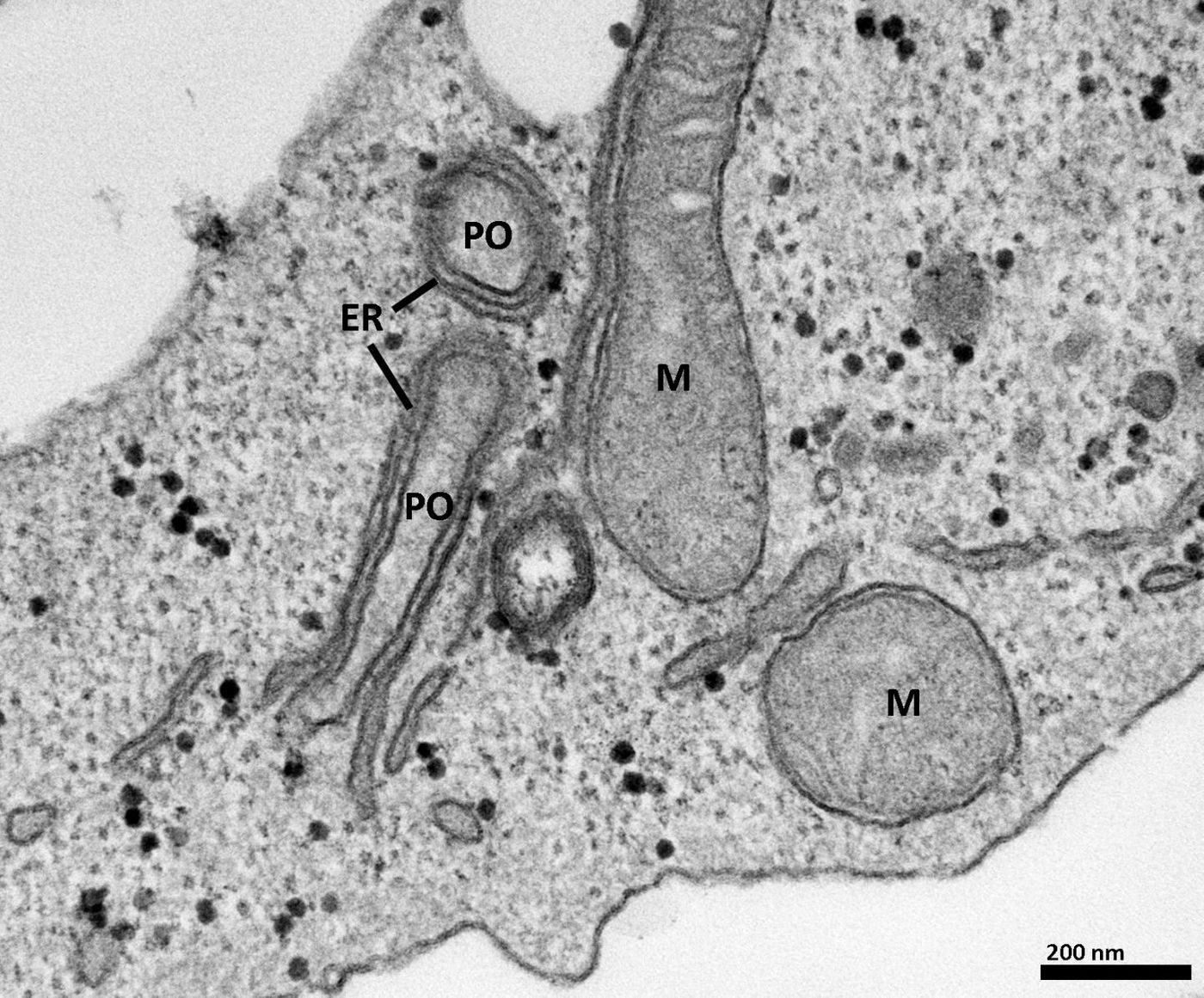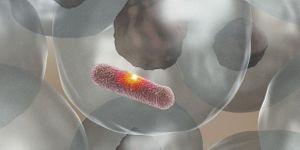Protein Tether Revealed in ER-Peroxisome Interaction
Cells are divided into specialized organelles that perform specific functions. The proper function of a healthy cell depends on the web of interactions between organelles and all of their associated molecules. Scientists at Exeter University have learned more about the interaction of two of those organelles, the peroxisome and the endoplasmic reticulum. That interaction appears to be critical to the production of certain types of lipids that are important to both nerve cell function and shielding cells from oxidative damage. This work, which could have implications for people suffering from peroxisomal disorders, was reported in the Journal of Cell Biology.
"Close contacts between peroxisomes and the ER were observed more than 50 years ago in ultrastructural studies, but the molecular mechanism remained a mystery," said the lead author of this study, Dr Michael Schrader, of the University of Exeter. It has been know that the two organelles exchange lipids, but the exact mechanisms underlying the transfer were not understood.
The investigators found that two specific proteins present on each organelle directly interact with one another; the ACBD5 protein of the peroxisome links with the VAPB protein of the ER. That linkage enables the movement of lipids between the two organelles. A disruption of the VAPB and ACBD5 interaction appears to halt that lipid transfer.
"This is the first molecular tether identified in humans, which mediates the contact between these two important cell compartments," said Schrader.
Damage to the peroxisome can lead to several developmental and neurological disorders, some of which cause death. A peroxisomal defect patient identified by experts at the Academic Medical Center in Amsterdam has brain damage and problems with eyesight; they also have a deficiency in their ACBD5 protein. This research could aid greatly in the identification and potentially, treatment of these individuals. While that may be a long way off before reaching the clinic, this is a critical first step in that process.
"If we understand organelle interaction better we might also be able to use this knowledge to protect cells from certain stress conditions which are linked to age-related conditions like neurodegeneration, blindness and diabetes," Schrader explained.
In an interesting confirmation of this group’s research findings, the Journal of Cell Biology has also published a second paper on this topic. Another research group led by Peter K. Kim at the Hospital for Sick Children, in Toronto came to similar conclusions independently. In that study, the researchers found that the interaction tethered the peroxisome, preventing it from moving around too much. Holding the peroxisome to the ER is critical to a variety of functions – the production of plasmalogen phospholipids, the control of cellular levels of cholesterol, and growth of the peroxisome.
If you would like to know more about peroxismal disorders, also called Zellweger Spectrum Disorders, watch the above video. There is more information on these two organelles, the peroxisome and ER, in the following video.
Sources: AAAS/Eurekalert! via Exeter University, JCB 2017 Costello et al, JCB 2017 Hua et al









